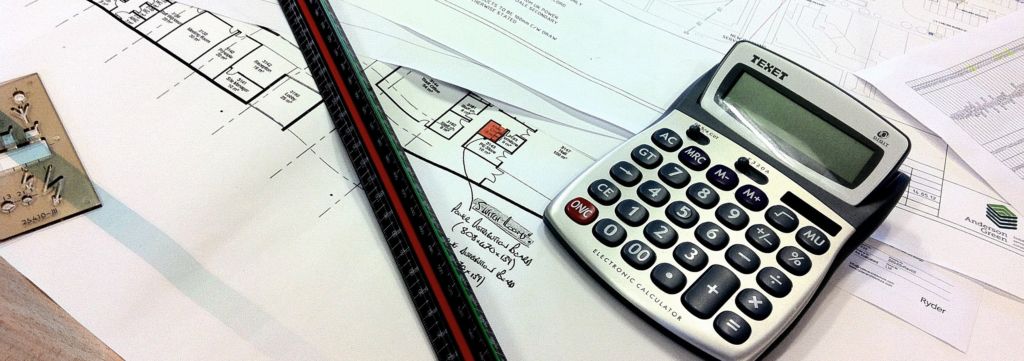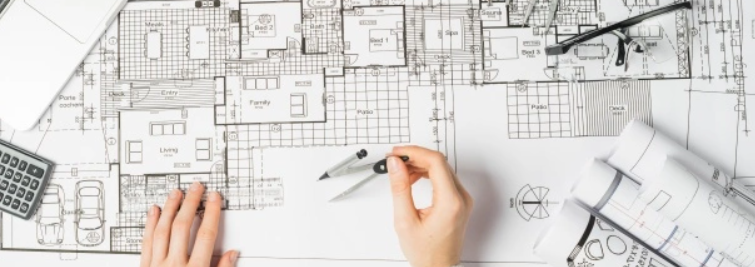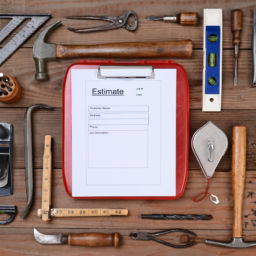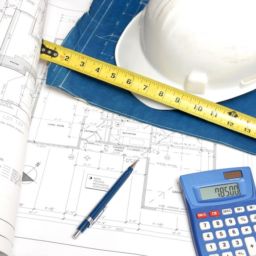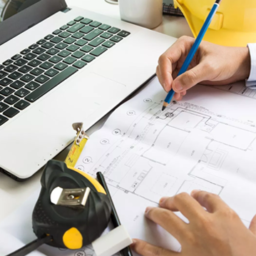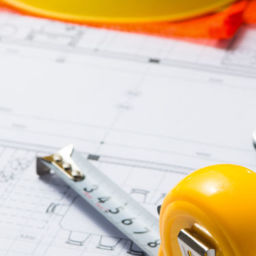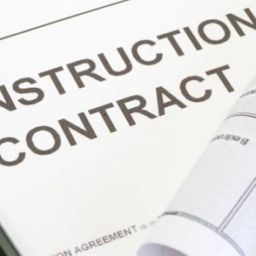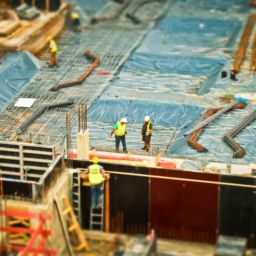Increase Profit Margins
The construction industry is yet to reach stable ground since the pandemic hit two almost years ago. The disruption in material supplies, labour and skill shortage due to Brexit uncertainties and the decreasing trend in profit margins, all add to the list of woes plaguing the industry right now.
Construction has been a relatively low-profit margin industry for a long time and it doesn’t seem to be improving anytime soon. Tier one contractors work on gross profit margins as low as 2% or 3%, if that’s all they have in for the job and they need to cost cut and penny pinch to turn a profit, what chance do you have of achieving more healthy margins? See the link below for an reporting of this
In many situations, an inaccurate mechanical estimation or any build estimation is the lead cause for losing a bid or experiencing cost overruns on a project. However, that is not the only cause. First off, let us look into the reasons why profit margins are low?
Please note where you see mechanical mentioned, this is interchangeable with electrical and insulation in our company as we specialise in all 3.
Reasons for low-profit margin; Increase Profit Margins
Businesses bidding extremely low to win tenders is an increasingly common trend these days. The idea of offering to do a task for the bare minimal profit seems to be the only way to receive any business. Better, faster, cheaper. This mindset has had a severe impact on the construction industry as a whole.
Intense competition plus hopes of forming new professional relationships and more profitable contracts by offering a few low bids are some reasons why companies quote as low as they do. They risk going into the red just to acquire a couple of projects and get their foot in the door.
The problem with this strategy is that it sets the bar low and your client will expect all further projects to be this cheap which is not sustainable! Even worse, if things don’t go to plan on that first project then you might not even receive the chance to bid on that second project, meaning you’ve just broken even or lost money on a job that was meant to open the flood gates but only ended up costing you time and resources.
Operating with such low-profit margins is doing more harm than good. Clients have become accustomed to getting work done cheaper and faster at the sub contractor’s expense.
The low margins on every project have forced businesses to take on more and more projects just to break even. Companies that follow this strategy not only increase their workload but also decrease the quality of their work.
How can you Increase Profit Margins?
Instead of worrying about factors outside of your control, focus on implementing changes within your company – submit better bids, reduce costs, and produce quality work to impress clients enough so they are willing to pay a premium to work with you . Here are some suggestions that can help you to increase profit margins on your projects.
1) Accurate Estimations:
In the preconstruction phase and across the course of your project, your estimator plays a crucial role. There’s no way to determine how profitable each job is if you don’t know how much it costs to do the project in the first place.
Calculate your all project costs correctly: An accurate construction estimate does not just include just the direct costs like material, equipment or labour cost but, it also includes indirect costs such as prelims and office staff costs that are required to complete a job. All these need to be as accurate as they can be when you factor them into your estimate so make sure you have crunched the numbers on these.
Get to know your costs: The major issue is that a lot of subbies are unaware of their yearly equipment charges, the future forecasted labour and material rates or their actual overhead charges. So, they will have no idea how much to charge on a job. Even if you work your fingers to the bone, your project will not be profitable if your estimates are inaccurate.
When you know your costs, your estimators can include the appropriate markups to meet your profit margins. Also, they can consider the risks associated with each project and prepare your mechanical estimate accordingly. Even if the risk crops up, you will be prepared for it and can absorb additional expenses without eating in to your targeted margin
If you’re not doing so already, you really need to start making use of technology that is available: The use of digital platforms and estimating software can enhance the accuracy of build and takeoff estimates whilst slashing the time it takes to complete them. You can also use up to date material databases so you know you have the latest prices.
2) Hire a Skilled Productive Workforce:
It is vital to enhance productivity, which means you and your team must work effectively to reduce costs and stay on schedule. Effective project oversight and management is usually the key to whether a project turns into a profitable one.
A poor supply chain management process, accidents, poor scheduling, an excessive amount of rework are some factors that can negatively affect productivity and profitability.
It’s vital to make your workforce as productive and efficient as possible while on the job. This entails ensuring that each employee has received the necessary training, skills and resources to perform their duties efficiently.
Assembling a talented team, ensuring that you have the right people for the job, who share the same goals and values is something that you should also be working on. Recruiting and retaining employees who offer value to the company should be a top focus, as it will only help your company improve and expand.
3) Thinking about the long game, foregoing instant gratification:
Setting long-term business goals will enable you to create good quality revenue and targets. High-performing contractors are quite often picky about the assignments they take on. They only take on work that they know will pay off.
Someone once told me that it’s not the jobs you take on its the jobs that you don’t that will make or break you
Consider what makes your company unique, and bid on projects that are a good fit for your skill sets. Grow where you’re planted, if you’re suited to smaller in and out type of jobs then stick to those. If you and your team prefer to dig in for the long haul on jobs then stop quoting for jobs which require your workers to be all over the country and at the same time, spreading yourselves too thin.
It’s definitely better to have less work but higher margins than more workload but low profitability and the best thing about this is that it’s sustainable and scalable over the long run.
You can find estimating software here if you want to estimate a project yourself. We have negotiated very favourable discounted rates with a leading estimating software provider in the United Kingdom.
How can Outsourcing Estimating Help?
Can outsourcing your estimating be the way forward? It is understandable for you to wonder what an estimating service has got to do with getting my business out of the red and into the black? How can a third party service that I have to pay for, help me increase my company’s profitability?
Outsourcing your mechanical estimates has everything to do with ensuring that your company makes a profit rather than a loss. Let’s see how:
- Decent profit margins are made possible at the ESTIMATING stage, not on delivery. You realise those profits during the delivery. No profit at estimating = zero chance during delivery, no matter how good your men are at their job. Hence, the tender stage is the most important stage and it deserves time and attention.
- They provide accurate and fast estimates: Estimating services usually have a highly skilled team in place, which means your M+E estimate will be as realistic and accurate as possible. They also have a faster turnabout time.
- They reduce your overheads significantly – When you outsource your mechanical estimating, the estimators who work for you are not on your payroll. Why keep an idle team of estimators on the payroll with hefty perks and employers NI when you could employ the service of a top-notch estimating business as and when you need them?
- They help increase your profit over time: When you use an estimating service, you can be sure of getting accurate and realistic estimates every time. In the longer run, it will increase your net profit.
- They reduce stress: When you hire an outsource estimating company, you don’t need to worry about processing or producing estimates. The ever-changing material prices or labour rates, stop being a bother. Just pass over the tender package for the project and they will take care of it.
- Time to grow your business: When you have a trusted estimating service in place, you can concentrate on other aspects of the project or growing your business and forget about estimating worries. Work on your business and not in it as the saying goes!
Increase Profit Margins, In conclusion:
There are far too many things that will go wrong and sabotage a project that would otherwise be profitable if an effort to account for them at tender stage isn’t made. Similarly, there are a lot of options to try to decrease and control costs without sacrificing the quality of work. You just need to find a system that works best for you.
As mentioned earlier, set realistic goals for the future, increase productivity, know your costs and get your estimates as right as possible. It’s a simple but proven formula. Outsourcing estimating services will help you along the way.
Here at Chase Estimating, we have an experienced team of estimators to help you with your insulation estimating or M+E estimating. Send us your request to enquiries@chaseestimating.com or call us at 01630 417161 and we will be more than happy to help you with your project.


